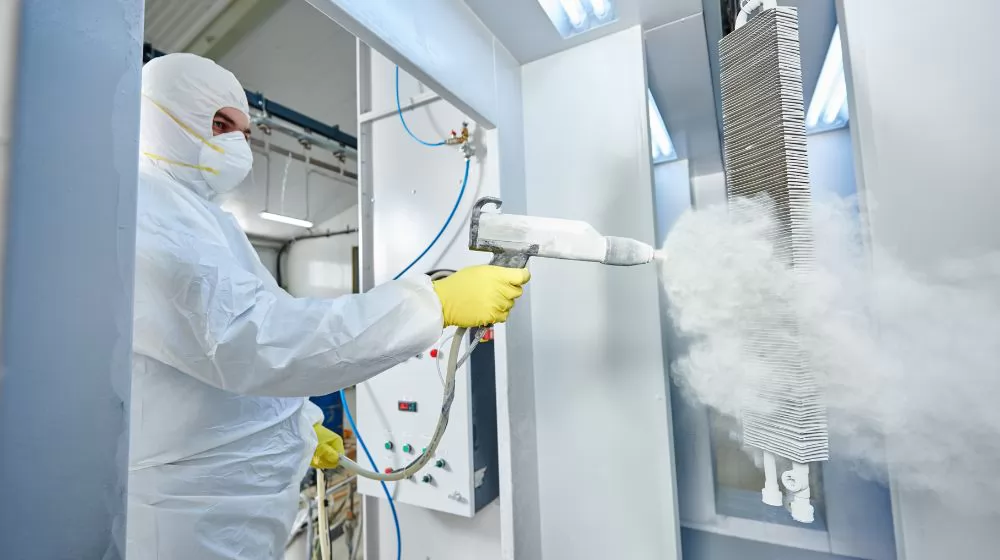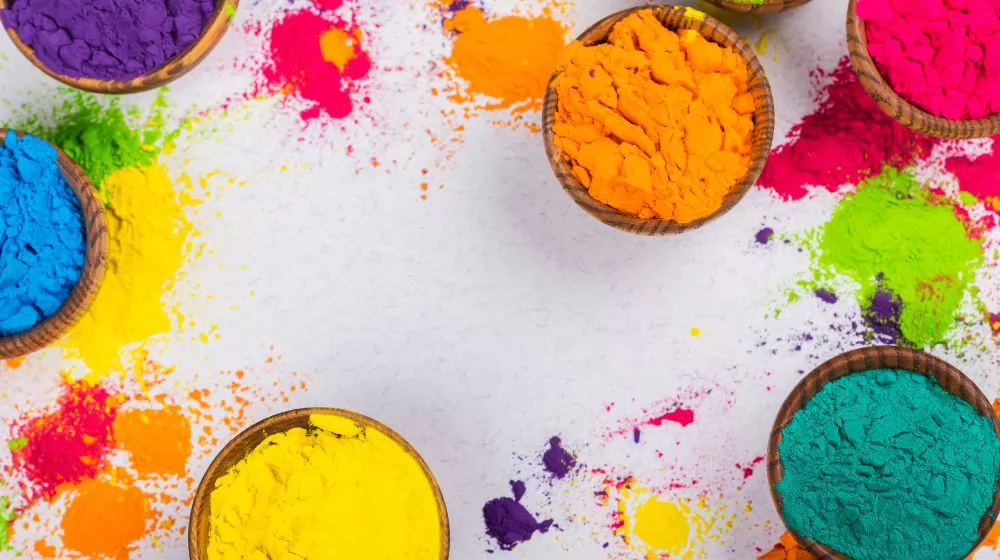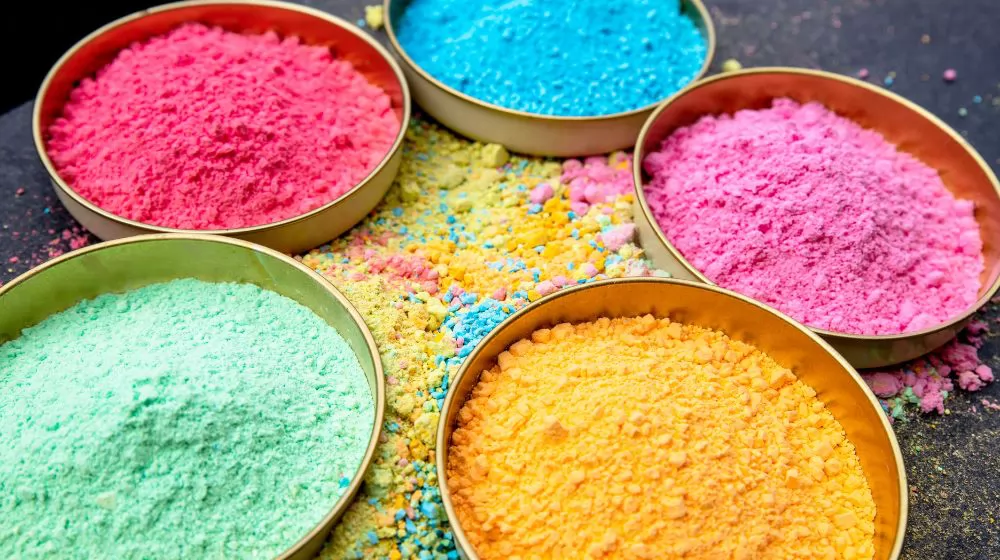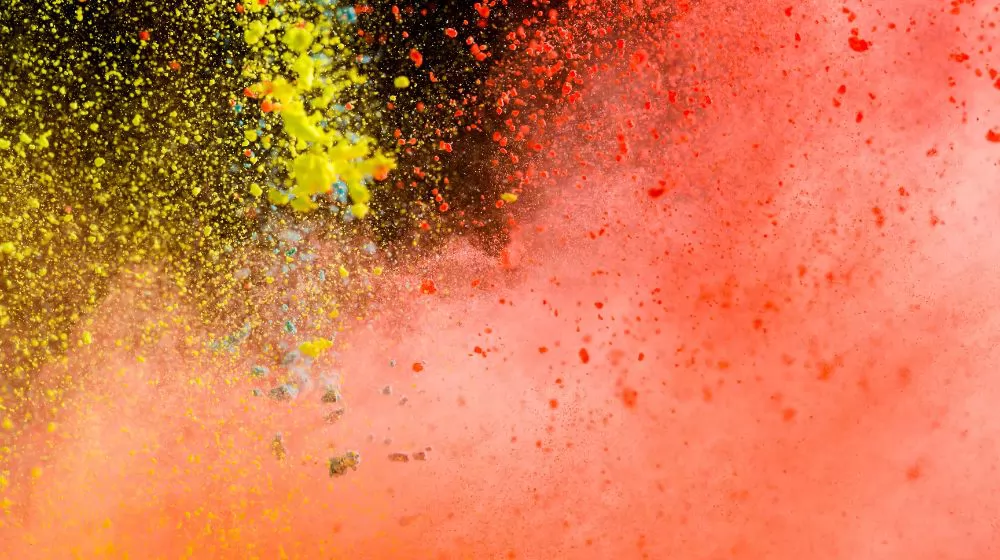
.png)

.png)
.png)


-
.png) 0086-757-85407388
0086-757-85407388 -

-
 terrychen@wintoly.com
terrychen@wintoly.com


.png)

.png)
.png)


.png)




Table of contents:
Powder coating has emerged as a popular finishing method, celebrated for its numerous advantages. But like any technique, it comes with its share of limitations. In this exploration, we dive into the world of powder coating to uncover the pros and cons that every enthusiast and industry professional should be aware of.
Powder coating offers outstanding durability and longevity, making it a preferred choice for a wide range of applications. Its resistance to corrosion is particularly noteworthy, as it shields surfaces from moisture and corrosive elements, making it ideal for outdoor furniture, automotive parts, and industrial equipment. The toughness of powder-coated finishes also provides excellent resistance to scratches, chips, and impact damage, ensuring the longevity of products subject to daily wear and tear.
Powder-coated surfaces demonstrate resistance to a variety of chemicals, making them suitable for applications in chemical processing, laboratories, and the automotive industry. Moreover, these coatings maintain their pristine appearance over time, offering long-lasting aesthetics.
The exceptional durability and longevity of powder coating not only extend the lifespan of products but also reduce maintenance and replacement costs. It is a cost-effective choice for businesses and industries seeking to maximize their investments, offering reliable protection and visual appeal that lasts for years. Whether for manufacturers, business owners, or homeowners, powder coating proves to be a reliable and enduring solution for a wide range of applications.

In an era of growing environmental awareness, powder coating stands out for its eco-friendly advantages. This finishing method offers several benefits that reduce its impact on the environment and make it a sustainable choice for various industries.
Low VOC Emissions: One of the primary eco-friendly aspects of powder coating is its minimal emission of Volatile Organic Compounds (VOCs). Unlike traditional solvent-based paints, powder coating releases almost no VOCs into the atmosphere during the application process. This not only improves air quality but also helps businesses comply with environmental regulations.
Reduced Waste: Powder coating is an efficient process with minimal overspray. Any excess powder can be collected and reused, reducing material waste. This not only saves resources but also lowers disposal costs.
Avoidance of Harmful Chemicals: Powder coatings are free from harmful chemicals such as solvents and heavy metals, which can be found in some liquid coatings. This absence of toxic substances not only protects the health of workers and consumers but also ensures that the disposal of waste materials is less harmful to the environment.
Energy Efficiency: The curing process for powder coating requires lower temperatures compared to other finishing methods, which can reduce energy consumption. This means less energy is needed to cure the coating, making it an energy-efficient choice.
Durability and Reduced Waste: As mentioned in the previous section, the durability of powder coating means that products have a longer lifespan, reducing the need for replacements. This not only conserves resources but also reduces the waste associated with discarded items.
Powder coating offers a wide array of finish options, making it a versatile choice for achieving various aesthetic and functional goals. Whether you're aiming for a sleek and glossy appearance or a textured, matte finish, powder coating can deliver the look you desire. Here are some key aspects of its versatile finish options:
Diverse Colors and Textures: Powder coatings come in a vast palette of colors, allowing you to match specific shades or create custom hues. This extensive range includes metallics, fluorescents, gloss, satin, and matte finishes. The ability to choose from various textures, from smooth to textured, adds another dimension to your design possibilities.
Customization: Powder coating is highly customizable, and you can experiment with different colors, textures, and finishes to achieve the desired aesthetic for your products. Whether you're a manufacturer looking to brand your products or an individual homeowner seeking a unique look, the customization options are virtually limitless.
Decorative Effects: Powder coating can be used to create decorative effects such as two-tone finishes, gradients, and patterns. This makes it a valuable tool for adding artistic and decorative touches to various items, from automotive parts to home furnishings.
Specialized Coatings: In addition to standard finishes, specialized powder coatings are available to meet specific needs. For example, there are anti-graffiti coatings that make it easy to remove unwanted markings, as well as antimicrobial coatings that inhibit the growth of bacteria on surfaces.
Protective Coatings: Powder coatings can also serve as protective layers. For example, textured and rugged finishes can provide added grip and safety, while clear powder coatings can protect underlying materials from corrosion and wear without altering their appearance.
Powder coating offers a multitude of cost-effective solutions, making it an attractive choice for businesses and individuals alike. Its efficiency in material usage minimizes waste, reducing the overall costs associated with raw materials. Moreover, the automated and straightforward application process leads to lower labor costs, especially in large-scale production settings.
Shorter production times are another cost-saving feature of powder coating, as items can be ready for use or shipment more quickly than with some other finishing methods. The durability of powder coatings also translates to long-term savings, as products maintain their appearance and protection over an extended period, reducing the need for frequent maintenance, touch-ups, or replacements.
Additionally, compliance with environmental regulations is simplified, thanks to the low emission of Volatile Organic Compounds (VOCs) in powder coating. This not only avoids potential fines and penalties but also contributes to a greener and more sustainable production process. Furthermore, the lower energy consumption required for the curing process results in energy savings, reducing operating costs.
In conclusion, the cost-effectiveness of powder coating extends across various aspects of production, making it a practical and economical choice for both industrial manufacturing and individual projects. By choosing powder coating, you can achieve high-quality finishes and protective coatings without straining your budget, making it a wise and financially prudent investment.

In addition to its cost-effectiveness, powder coating offers an affordable and highly efficient application process. This process eliminates many of the extra steps and drying times associated with traditional liquid paint, resulting in both time and cost savings.
The affordability of powder coating begins with the raw materials themselves. Powder coatings are generally less expensive than their liquid paint counterparts. This cost advantage is particularly beneficial for businesses looking to optimize their production expenses. In today's competitive market, cost savings can be a significant factor in maintaining competitiveness and profitability.
Moreover, powder coating's efficient use of materials contributes to its cost-effectiveness. Unlike liquid paint, which can result in significant overspray and waste, powder coating is applied electrostatically, with minimal material loss. Any excess powder can be collected and reused, reducing the need for additional raw materials and further lowering costs.
Furthermore, the storage requirements for powder coating raw materials are significantly more space-efficient compared to traditional paint cans. The compact nature of powdered coatings means that businesses can save valuable floor space in their facilities, allowing for more efficient storage and potentially reducing rental or operational costs.
In summary, the affordability and efficiency of the powder coating process extend beyond its cost-effective material usage. It reduces the need for extra steps and drying times, uses less expensive raw materials, and takes up significantly less storage space. All of these factors contribute to making powder coating a practical and economical choice for a wide range of applications, from large-scale industrial manufacturing to smaller, individual projects.
Powder coatings, once applied, require minimal maintenance, making them a preferred choice for a wide range of applications. The inherent durability and resistance to corrosion and scratches mean that there's seldom a pressing need for extensive maintenance routines or the use of cleaning solutions or solvents to keep the surface in tip-top shape.
The exceptional durability of powder coatings ensures that your products maintain their initial appearance and protection over an extended period. This longevity translates to less need for frequent touch-ups or repairs, reducing both the time and costs associated with maintenance. Whether your products are exposed to the rigors of outdoor elements or the daily wear and tear of industrial environments, powder coatings stand strong, requiring little intervention to keep them looking and performing at their best.
One notable advantage of powder coatings is their resistance to fading. Even when exposed to direct sunlight and UV radiation, the vibrant colors and finishes remain steadfast, eliminating the need for constant re-finishing or repainting. This not only saves time but also preserves the aesthetic appeal of your products.
Cleaning and maintaining powder-coated surfaces are relatively hassle-free. They naturally resist stains and dirt, making regular cleaning a straightforward process. In most cases, a simple wipe-down with a mild detergent and water solution, followed by a rinse and dry, is sufficient to keep your powder-coated items looking pristine. Typically, you can expect to clean the applied coating only a few times a year, a stark contrast to finishes that demand frequent attention and upkeep.
The low maintenance requirements of powder coatings are a lasting benefit, offering convenience, cost savings, and long-lasting aesthetics. With their remarkable durability and resistance to fading, powder-coated products require minimal intervention to stay in excellent condition. This makes powder coating an excellent choice for those seeking both performance and ease of maintenance in their finished products.
When it comes to environmental safety, powder coatings shine as a cleaner and more eco-friendly choice in contrast to liquid paints. Liquid paints are known to release toxic fumes containing volatile organic compounds (VOCs) into the atmosphere, posing health risks and contributing to air pollution. With powder coatings, this risk is virtually non-existent, or at the very least, significantly minimized, making it a far safer option for both human health and the environment.
The release of toxic fumes from liquid paints occurs during the application process and as the paint dries. These fumes can contain harmful chemicals, including solvents and VOCs, which can negatively impact air quality and pose health hazards to workers and surrounding communities. Additionally, the release of such compounds into the atmosphere can contribute to the formation of smog and the deterioration of air quality.
In contrast, powder coatings are inherently low in VOCs, thanks to their dry and solvent-free application method. The powder is electrostatically applied to the surface, with any excess powder being collected and reused, reducing emissions. Moreover, the curing process of powder coatings typically requires lower temperatures, leading to reduced energy consumption, further minimizing the environmental footprint.
The minimal to no emission of toxic fumes from powder coatings makes them a far safer choice for the health and well-being of those involved in the production process and the broader community. It also aligns with environmental regulations and the growing demand for greener, more sustainable practices in manufacturing and finishing. Powder coatings not only provide high-quality finishes but also contribute to a cleaner and safer world.

While powder coating offers numerous advantages, it's essential to consider the initial setup costs associated with adopting this finishing method. Understanding these costs can help businesses and individuals make informed decisions. Here's an overview of the factors related to initial setup costs:
Equipment and Facilities: To begin powder coating, you'll need specialized equipment, including a powder coating booth, an oven for curing, and the electrostatic application equipment. The cost of acquiring and installing this equipment can be a significant upfront investment. Additionally, the space required for this equipment and the curing oven should be factored into the setup costs.
Training and Expertise: Properly operating powder coating equipment requires training and expertise. Businesses may need to invest in training programs for their staff or hire experienced operators. Individual enthusiasts might need to invest time and resources to acquire the necessary skills.
Ventilation and Safety Measures: Adequate ventilation is crucial when working with powder coatings to prevent the buildup of airborne particles. Setting up proper ventilation systems and safety measures, including personal protective equipment, adds to the initial setup costs.
Powder Coating Materials: While the raw materials for powder coating are generally less expensive than liquid paint, there is still an initial cost associated with procuring the specific powder coatings needed for your projects. These costs may vary depending on the type and quantity of powder coatings required.
Regulatory Compliance: Depending on your location and the scale of your powder coating operation, there might be regulatory compliance requirements that come with associated costs, such as permits, inspections, and environmental compliance.

Before embarking on a powder coating project, it's crucial to acknowledge and understand the pre-treatment requirements that are fundamental to the process. Pre-treatment is a critical step that significantly impacts the quality and longevity of the powder-coated finish.
Surface preparation takes center stage, requiring a thorough cleaning to remove contaminants like dirt, oils, rust, or old paint. Depending on the substrate's material and condition, cleaning methods such as abrasive blasting, chemical cleaning, or mechanical surface preparation may be employed.
Conversion coatings, like phosphate-based treatments, are applied in some cases post-cleaning to enhance adhesion, boost corrosion resistance, and promote better powder coating bonding.
Proper drying and temperature control following pre-treatment are essential, as they ensure the substrate is ready for the powder coating application and subsequent curing.
Effective masking and protection techniques should be employed to safeguard areas of the substrate that should not be coated, especially in intricate or multi-component products.
Compatibility with the chosen powder coating is paramount when selecting pre-treatment methods and materials. A mismatch in compatibility can affect adhesion and the overall performance of the finish.
Before embarking on a powder coating project, it's crucial to acknowledge and understand the pre-treatment requirements that are fundamental to the process. Pre-treatment is a critical step that significantly impacts the quality and longevity of the powder-coated finish.
Surface preparation takes center stage, requiring a thorough cleaning to remove contaminants like dirt, oils, rust, or old paint. Depending on the substrate's material and condition, cleaning methods such as abrasive blasting, chemical cleaning, or mechanical surface preparation may be employed.
Conversion coatings, like phosphate-based treatments, are applied in some cases post-cleaning to enhance adhesion, boost corrosion resistance, and promote better powder coating bonding.
Proper drying and temperature control following pre-treatment are essential, as they ensure the substrate is ready for the powder coating application and subsequent curing.
Effective masking and protection techniques should be employed to safeguard areas of the substrate that should not be coated, especially in intricate or multi-component products.
Compatibility with the chosen powder coating is paramount when selecting pre-treatment methods and materials. A mismatch in compatibility can affect adhesion and the overall performance of the finish.

While powder coating offers numerous advantages, it's important to acknowledge one of its potential drawbacks, which is less control over the application process compared to some other finishing methods. Understanding this limitation can help you make informed decisions regarding your projects. Here's an overview of the factors related to having less control over the process:
Limited Adjustability: Powder coating is often considered a one-shot process. Once the powder is applied and enters the curing oven, there is limited room for adjustments. This means that if any imperfections or issues arise during or after the curing process, it can be challenging to rectify them without redoing the entire coating. In contrast, liquid paint may offer more adjustability and touch-up opportunities during and after application.
Complex Parts: For intricate or complex parts with recesses, corners, or hard-to-reach areas, achieving an even and uniform powder coating can be challenging. The electrostatic nature of the application process tends to attract powder particles to the visible surfaces, potentially leaving less coverage in recessed or hidden areas. Extra care and specific techniques may be required to address this issue effectively.
Uniform Thickness: Maintaining a uniform thickness of the powder coating can be more challenging, especially on larger or three-dimensional objects. Variations in thickness can affect the finish's appearance and performance, and it may require additional expertise or equipment to achieve the desired consistency.
Despite these limitations, it's important to note that experienced operators and proper equipment can mitigate many of these issues. While powder coating offers less control during the application process compared to some other methods, its numerous advantages, such as durability, environmental safety, and cost-effectiveness, continue to make it a popular choice in various industries. Careful consideration of the specific requirements of your project and the expertise of those applying the coating can help you navigate the challenges associated with having less control over the process.
While powder coating offers several advantages, it is essential to recognize one of its limitations – it may not be suitable for all types of materials. Understanding this constraint is crucial when deciding on the most appropriate finishing method for your specific project. Here's an overview of the factors related to the limited compatibility of powder coating with certain materials:
Thermosetting Materials: Powder coating is most effective on materials that can withstand the high temperatures required for curing (typically around 350 to 450 degrees Fahrenheit or 180 to 230 degrees Celsius). Materials that cannot tolerate these temperatures, such as certain plastics or heat-sensitive components, are not suitable for traditional powder coating processes.
Poor Electrical Conductivity: The electrostatic application of powder coating relies on the material's ability to conduct electrical charges. Substrates with low electrical conductivity, such as wood, rubber, or some types of plastic, may not attract or hold the powder effectively, making the process less efficient or impractical.
Complex Geometries: Powder coating works best on flat or gently curved surfaces. For objects with intricate or highly irregular shapes, especially those with deep crevices or recesses, achieving an even and uniform coating can be challenging. The electrostatic attraction may not reach or adequately cover all areas of complex parts.
Surface Preparation: Some materials may require extensive pre-treatment to make them suitable for powder coating. This could involve chemical treatments, primers, or specialty adhesion promoters. These additional steps can increase the complexity and cost of the process.
Specialized Coatings: While powder coatings come in a variety of colors and finishes, certain specialized coatings, such as those with unique chemical resistance or specific performance properties, may not be readily available in powder form. In such cases, alternative finishing methods may be required.
It's important to note that while powder coating has limitations, it remains a versatile and effective finishing method for a wide range of materials, especially metals. The decision to use powder coating should be made after evaluating the specific material compatibility and considering alternative finishing options when necessary. Powder coating's strengths, such as durability, environmental benefits, and cost-effectiveness, continue to make it a popular choice in various industries, but understanding its limitations is essential for successful application.
While both powder coating and liquid paint offer their own set of advantages, one area where liquid paint excels is in the ease of performing minor touch-ups when needed. With liquid paints, it's relatively straightforward and convenient to address small imperfections or scratches in the coating. A simple application of liquid paint to the affected area can quickly rectify the issue, and the touch-up can often seamlessly blend with the existing finish.
In contrast, powder coating presents challenges when it comes to touch-ups. Due to its curing process, which involves baking the powder at high temperatures, making minor adjustments or repairs to the coating isn't as straightforward. Unlike liquid paint, where touch-ups can be localized, the nature of powder coating often requires the entire process to be carried out from start to finish, including the cleaning, pre-treatment, application, and curing stages. This can be a more time-consuming and resource-intensive task, especially when addressing small, isolated blemishes.
The need for a complete recoating process in powder coating can be less convenient, particularly when dealing with larger objects or intricate components. It may not be as cost-effective for minor repairs or touch-ups, making liquid paint a more practical choice in situations where such adjustments are likely to be required.
It's important to consider the specific needs of your project when choosing between powder coating and liquid paint. While powder coating offers many advantages, the ease of performing minor touch-ups is an area where liquid paint holds an advantage. Understanding these differences can help you make an informed decision based on your project's requirements and the level of convenience you seek when addressing small imperfections in the coating.
In the realm of powder coating, the reliance on ovens for curing is a defining characteristic, setting it apart from finishing methods that allow for ambient curing. While this approach offers numerous benefits, it also comes with considerations regarding both cost and application duration.
The need for baking the powdered coating is a fundamental requirement to achieve the remarkable attributes that powder coating is known for – durability, resistance to corrosion, and a long-lasting finish. The curing process takes the finely applied powder particles and transforms them into a solid, resilient coating that adheres strongly to the substrate. This ensures that powder-coated surfaces maintain their quality and performance over an extended period, even in demanding environments.
However, the necessity of oven curing does introduce complexities and considerations into the application process. One notable aspect is the cost. The use of ovens in the curing stage can lead to increased energy consumption, which in turn can translate into higher operational costs. Moreover, the acquisition and maintenance of curing ovens represent initial investments for businesses that choose powder coating. The associated costs, while justifiable for many applications, should be factored into the overall project budget.
Another consideration is the time required for the powder coating process. The sequence of preparing the substrate, applying the powder, and then curing it in the oven can extend the application timeline. While the curing duration itself is relatively short, the entire process, including prep work and transport to and from the oven, can contribute to a more extended project timeline. This may be particularly relevant for businesses working on tight production schedules or for projects involving large or intricate items.

Powder coating, while renowned for its many advantages, is a finishing method that demands the use of specialized equipment to ensure successful application. This reliance on unique tools and facilities is a key aspect to consider when evaluating the feasibility and cost of powder coating projects. Here are the main factors related to the need for special equipment in powder coating:
Powder Coating Gun: At the heart of the powder coating process is the powder coating gun, an essential tool that electrostatically charges the powder particles and applies them to the substrate. This specialized gun ensures even and efficient coverage, a critical element in achieving a high-quality finish.
Powder Coating Booth: A controlled environment is necessary for powder coating application to prevent overspray and ensure a clean workspace. The powder coating booth, equipped with proper ventilation and filtration systems, provides this essential environment.
Curing Oven: After the powder is applied, it must undergo curing to melt and fuse into a durable coating. A curing oven, capable of reaching the required temperatures, is a central component of the process. The oven ensures that the powder coating achieves its desired qualities of strength and longevity.
Surface Preparation Equipment: Proper cleaning and pre-treatment of the substrate are essential for successful powder coating. Depending on the material and its condition, various surface preparation equipment, such as abrasive blasters or chemical treatment systems, may be required.
Hanging and Handling Equipment: To facilitate the handling of objects during the coating and curing process, hanging and handling equipment, such as racks and hooks, are often used. These tools ensure that the coated items are properly positioned for even coverage and effective curing.
Safety Gear and Personal Protective Equipment: Powder coating operators must use safety gear, including masks, gloves, and protective clothing, to shield themselves from exposure to the powder particles and ensure their safety during the application process.
Maintenance and Cleanup Equipment: Routine maintenance and cleaning of equipment are vital to a smooth powder coating operation. This includes items like powder recovery systems and tools for equipment maintenance.
Powder coating, with its remarkable strengths and inherent limitations, offers a comprehensive range of benefits and challenges. Whether you're an industry professional or a DIY enthusiast, being well-informed about the pros and cons of this finishing method empowers you to make sound decisions for your projects. If you have any concerns about choosing powder coating, we can solve it for you, please feel free to contact Wintoly!

 terrychen@wintoly.com
terrychen@wintoly.com
.png) 0086-757-85407388
0086-757-85407388
 6 Chaoyang Rd., National Demonstration Eco-industrialzone, Nanhai, Foshan,Guangdong,China
6 Chaoyang Rd., National Demonstration Eco-industrialzone, Nanhai, Foshan,Guangdong,China

.png)
